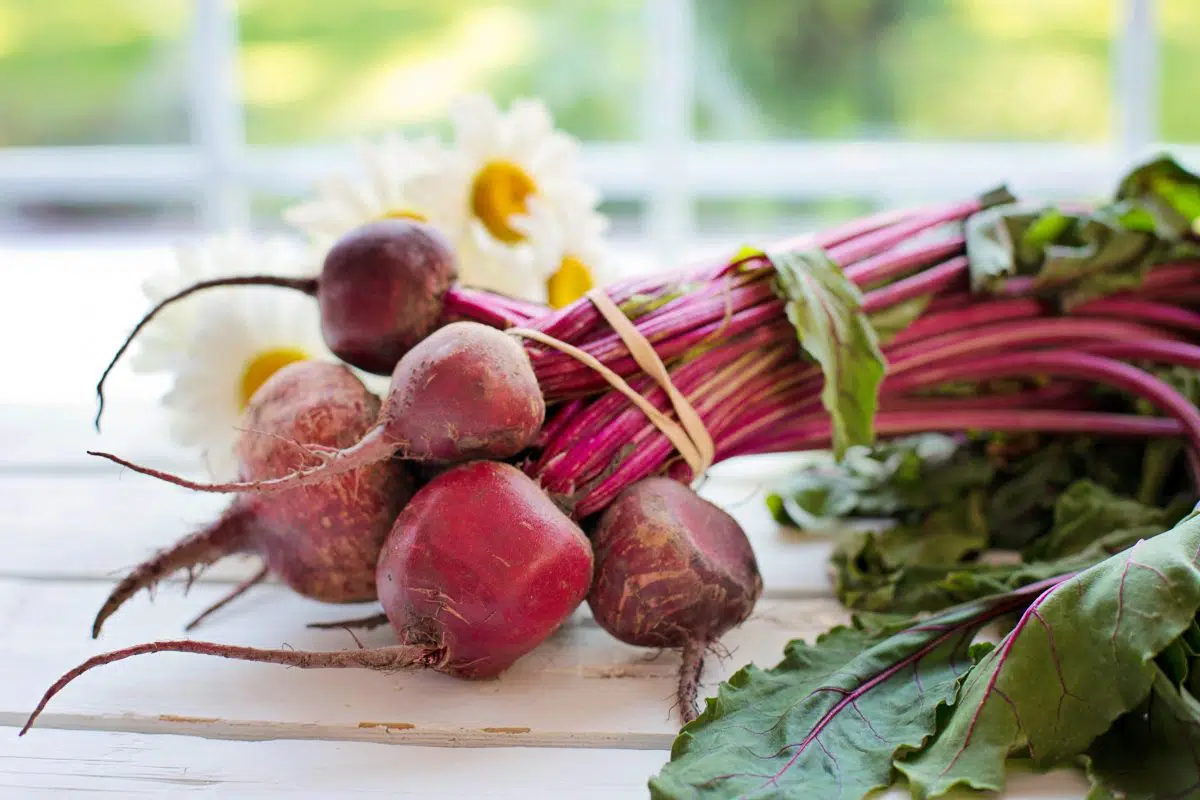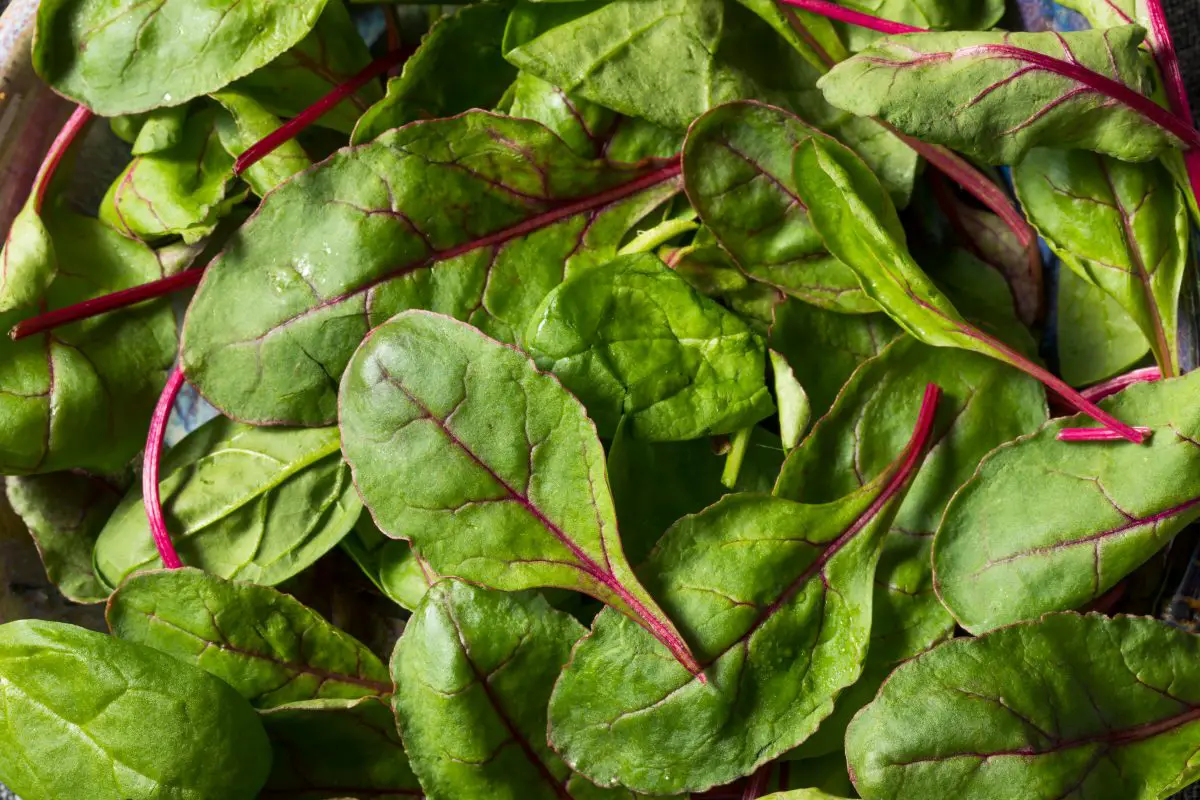
Growing beets at home may be difficult for beginners, as they require some expertise to successfully grow them. Beetroot needs to stay in the ground until it has fully matured so it can keep replenishing sugar levels and provide you with more food for the winter months.
With some assistance from our blog, we will give you all the guidance you need in growing beets, figuring out when to harvest beets, and of course storing beets. Let’s dive right in!
Jump ahead to:
When to Harvest Beets – Proper Timing
Since you’re here to figure out when to harvest beets let’s get right to it! Harvesting beets doesn’t have to be difficult, you just need patience!
Beets are usually harvested in the fall but they can be harvested any time of the year. You want to wait until they are fully grown so that you can harvest beets with minimal work.
The best time to harvest beets is when they are about 2-3 inches in diameter. If you wait too long, then they can become tough or fibrous and won’t taste as good.
Beet Harvesting Step-by-Step
- Prepare to harvest beets when they are around 2-3 inches in diameter.
- Grasp the base of the greens firmly, and pull the beet out of the ground.
- Clean off any soil on the root with your hands. DO NOT wash the roots right away unless you are going to use the beet immediately otherwise rot can set in early.

Best Practices for Harvesting Beets
We don’t need to harvest beets all at once if we have a lot of them. We can keep some in the ground while harvesting the ones that are ready.
Carefully pull them out of the ground without breaking off any of its leaves or roots.
Beets are an excellent source of many nutrients and antioxidants, but in order to reap these benefits, they first need to be harvested.
The best time to harvest beets is in the fall. This gives them enough time to store their nutrients and vitamins for the winter months.
How to Properly Check the Beet Plant for Ripeness

Beets can be prepared and eaten raw or cooked. If you are not sure if your beets are ripe, there are a few ways you can check for ripeness.
- To see if the beet is ready to be picked, examine the stem of the beet for browning at the top. If it is evident that the beet is ready to be picked, then it has reached its full flavor and should not be left on the ground any longer.
- If you want to prepare your beet before eating them raw, cut off both ends of the beet and place it in a bowl of water with ice cubes in it. After about 10 minutes of being in cold water, they should turn bright purple on both ends which means they are fully ripe and ready to eat!
- The best way to test for beets’ ripeness is by looking at the color of the leaves. Beet leaves will change from green to purple-red when they are ready to be harvested.
- The beet’s root should also feel firm and crisp, with no soft spots or hollows.
How many beets do you get from one plant?
Sadly just one beet comes from each beet plant. This means you probably need to plant several for a large yield (obviously). However, keep in mind that a single beet seed can actually sprout multiple beet plants during germination.
Storing Beets Properly
Beet plants are a type of vegetable, and as such, they can be stored in the fridge for up to one week. Place them in a plastic bag in the fridge.
If you plan on storing them for more than a week, you should place them in an airtight container and keep them stored in the fridge. Do not wash them unless you plan to eat them fairly soon. This will accelerate the probability of rot setting in.
How to Plant Beets
It is important to plant beets in a sunny area and make sure that they are well-drained. You can also use aged compost and cover them with about two inches of soil.
Beets have a long growing season, so it is recommended that you start planting them at least six weeks before the last frost date. You should also wait until all danger of frost has passed before you harvest them, as they will become too tough to eat if they’re left in the ground during winter.
Planting Beets Step-by-Step
Beets are a type of plant that can be grown in the ground or in pots.
First, you need to decide on a space to plant the beets so that they can grow in rows. Beets have a deep root system, so they need at least 12 inches of space between each row. You also need to provide an inch of space between each beet for maximum growing potential and efficiency.
Beet seeds need at least 7-10 days of cold stratification before planting them outdoors in the spring. Beets should be planted in full sunlight, so you’ll need to make sure that your soil is well drained and not too wet or dry for gardening success!
The soil should be tilled first and then turned over with a spade or fork before planting the seeds about one inch deep into the soil surface.
Begin by planting your beet seeds or seedlings 2 inches deep in moist soil. You should water the plants every day until you see signs of new life. This usually happens about 3 to 4 weeks after planting time when new leaves appear on top of the soil surface. You can trim back the leaves from time to time so that they don’t shade out any other growth below ground.
How Long do Beets Take to Grow?

A beet takes about 5-6 weeks to grow on average but can take up to 8 weeks depending on the type of beet that you plant.
The first step is to plant them in a rich soil and they need to be properly watered every day for about four weeks. Additionally, they need sunlight for about 6 hours each day so make sure they are planted outside or under a light, if they are being grown indoors.
Dealing With Beet Weeds in Your Garden
Beet weeds are a common problem in gardens. They are difficult to get rid of, and they can take over your garden if you let them. Luckily, there are some ways to deal with beet weed infestation.
There are many methods for dealing with a beet weed infestation in your garden, but one of the most effective is to pull up the weeds’ roots when they grow and work their way into your plants. If you find it difficult to see the roots, use a shovel or other long-handled tool to dig down near where you saw new growth.
Other ways include using mulch or you can use a pre-emergent weed killer, or use a post-emergent weed killer.
Why Should You Grow Beets?

Beets are a root vegetable that can be eaten raw, cooked, or juiced.
Some beets have a creamy texture when they are cooked while others have a crunchy texture. The flavor of the beet is slightly sweet and earthy.
Beets contain health-promoting betalains which are antioxidants that are also helpful in reducing inflammation. They also contain folate and iron to promote healthy metabolism and energy levels.
Beets are a super food. They’re rich in folate and manganese, which is necessary for a healthy body. They also contain nitrates, which can lower your blood pressure and reduce the risk of cardiovascular disease.
Beets are also rich in fiber and sugar, so they can help you lose weight. In fact, they’re one of the most effective sources of natural sugar that exist!
The benefits of growing beets are endless. Beets are a great source of folate, potassium, magnesium, vitamin C and iron.
Many people don’t get enough folate in their diet because they don’t eat many vegetables or fruits. Folate is important for the growth of tissues in the body and it helps with moods and cognitive function so consider adding beets to your diet!
Growing beets has never been easier! You can grow them in containers on your porch, window sill or kitchen windowsill- you just need about 2 square feet of space. Beet seeds only need 8 weeks to start producing beet roots that are ready to be harvested.
What are Beet Greens

Beet greens are the leaves that grow off the plant after the beet is harvested. They are packed with health benefits making them a very popular choice for salad greens or side dishes. These leaves contain a lot of vitamins, minerals, and antioxidants that make them an excellent addition to any diet. Beet greens are now widely available in mainstream grocery stores and more people have become aware of their benefits.
Beet greens are a very healthy and tasty food to eat. They can be used in salads, sandwiches, or as a side dish with any meal.
People mostly use beet greens raw without prepping them at all. It is often combined with other vegetables like spinach, kale, or lettuce as an ingredient for salads or in sandwiches.
How to Harvest Beet Greens
Harvesting beet greens is actually a simple process. Beet greens can be harvested at any time during the year, but they are best when they are young and tender.
Harvesting these greens benefits the garden because it prevents the crop from going to waste. Furthermore, harvesting beet greens provides a lot of nutrients to your diet.
There are three steps involved in harvesting beet greens:
1) Cut off the tops of the plant with scissors or knife if necessary
2) Cut off any tough or damaged leaves on the plant
3) Rinse and use immediately or store in an airtight container in your refrigerator for up to one week
Recommended Reading
How to Harvest Dill Correctly
Dill plants are not hard to grow but does require some attention. If you're not familiar with how to harvest dill, it can be a daunting task..
When to Harvest Potatoes
Picking the perfect time when to harvest potatoes is a tricky task. You have to choose the right time so that you don’t ruin your crop.
Best Substitute for Carrot
Sometimes carrots can be overused. Perhaps you're just looking for similar health benefits, but looking for a substitute for carrots
When to Pick Spaghetti Squash
Before you can enjoy this delicious squash, you must know when to pick spaghetti squash at the correct time. We will help guide you on how..
